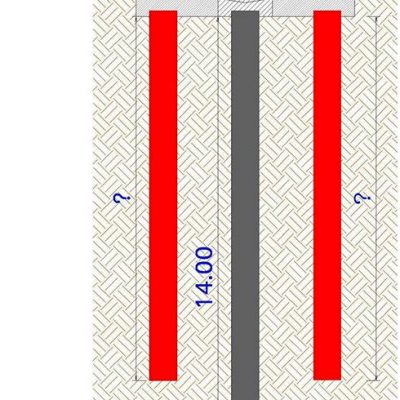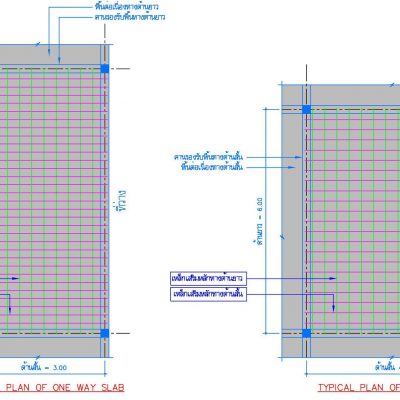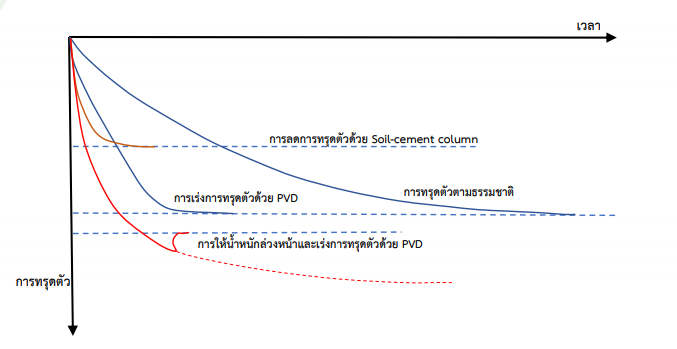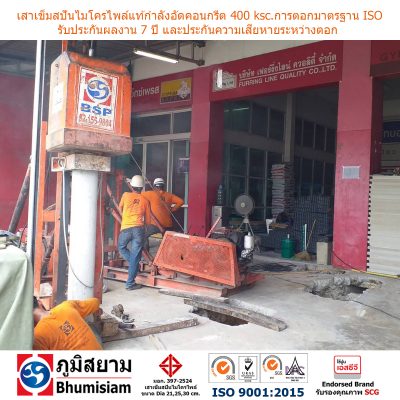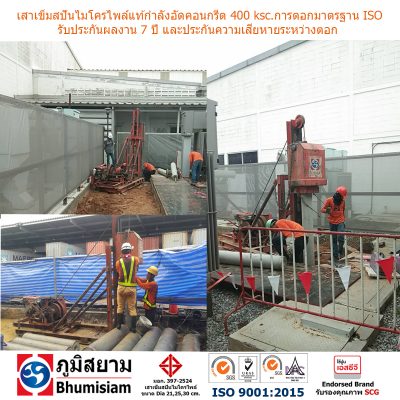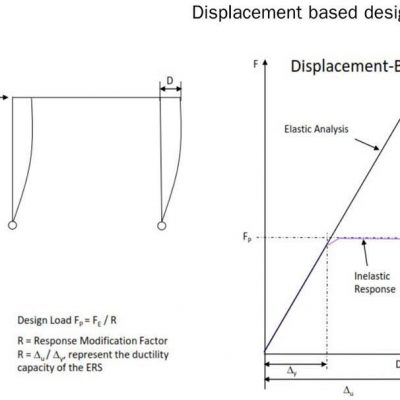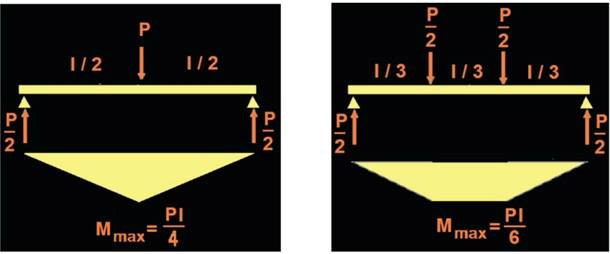
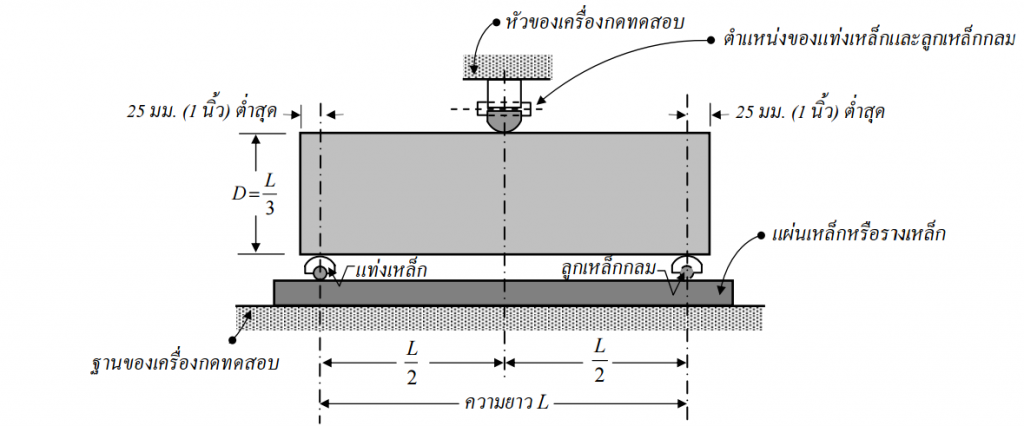
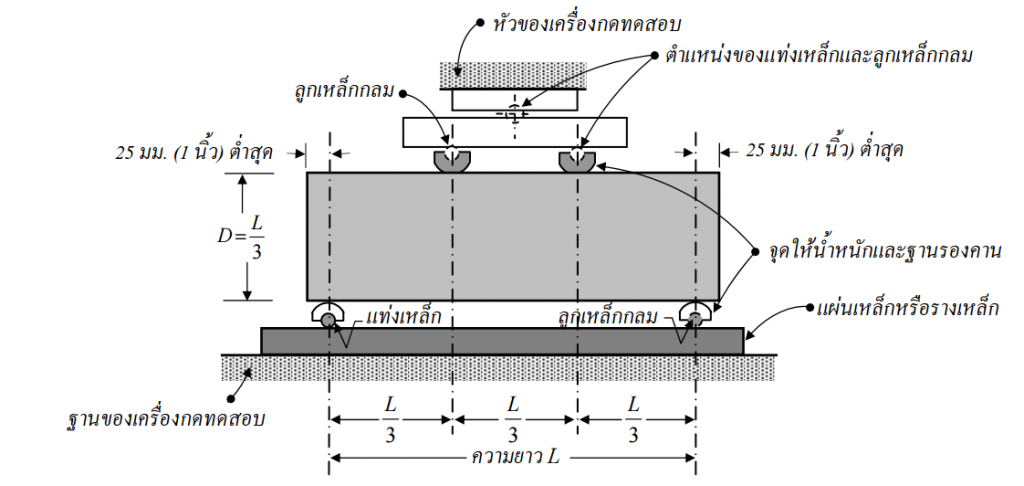
ref: https://www.facebook.com/bhumisiam/posts/1308100699236052
สวัสดีครับแฟนเพจที่รักทุกๆ ท่าน
เนื่องจากเมื่อวันก่อนที่ผมโพสต์เกี่ยวกับค่าหน้าตัดเหล็กเสริมรับแรงดึงน้อยที่สุดนั้นเราจะต้องหาจากค่าโมดูลัสการแตกร้าว และ มีเพื่อนของเราท่านหนึ่งถามผมมาว่าจากในรูปที่ผมแนบมาด้วยนั้น (ดูรูปที่ 1) เป็นรูปการทดสอบค่าๆ นี้หรือไม่ ? วันนี้ผมจะมาตอบคำถามข้อนี้นะครับ
ประการแรกเลยนะครับ คำตอบ คือ ใช่ครับ การทดสอบหาค่าๆ นี้สามารถทำการทดสอบได้ 2 วิธีด้วยกัน คือ
(1) วิธีการ CENTER POINT LOADING (ดูรูปที่ 2)
วิธีการนี้จะอ้างอิงตามมาตรฐาน ASTM C239
(2) วิธีการ THIRD POINT LOADING (ดูรูปที่ 3)
วิธีการนี้จะอ้างอิงตามมาตรฐาน ASTM C78
โดยที่เราที่สามารถที่จะเลือกใช้วิธีการทดสอบได้ทั้ง 2 แบบเลยครับ แต่วิธีการที่นิยมมากที่สุดจะเป็นวิธีการ THIRD POINT LOADING ครับ โดยที่ทั้ง 2 วิธีการจะมีความแตกต่างกันทั้งในเรื่องขั้นตอน และ วิธีการทดสอบ และ สมการที่ใช้ในการทดสอบ สมการที่ใช้สำหรับแต่ละวิธีการได้แก่
(1) สมการสำหรับวิธีการ CENTER POINT LOADING
P = 3PL/2bd^(2)
(2) สมการสำหรับวิธีการ THIRD POINT LOADING
แบ่งออกเป็น 2 แบบ คือ
เมื่อรอยแตกเกิดในช่วงกลางของคาน
P = PL/bd^(2)
เมื่อรอยแตกอยู่ภายนอกช่วงกลางของคาน โดยระยะที่เกิดจะเกิดห่างออกมาไม่เกินร้อยละ 5 ของช่วงคาน
P = 3Pa/bd^(2)
R คือ คืาการรับแรงดัด มีหน่วยเป็น MPa
P คือ แรงสูงสุดที่อ่านได้จากเครื่องทดสอบ มีหน่วยเป็น N
L คือ ความยาวช่วงคาน มีหน่วยเป็น mm
b คือ ความกว้างเฉลี่ยของหน้าตัดบริเวณที่เกิดรอยแตก มีหน่วยเป็น mm
d คือ ความลึกเฉลี่ยของหน้าตัดบริเวณที่เกิดรอยแตก มีหน่วยเป็นเป็น mm
a คือ ระยะเฉลี่ยจากรอยแตกถึงฐานรองคานด้านที่ใกล้ที่สุด มีหน่วยเป็น mm
Yesterday I post about the minimum tensile steel in beam, and I also mentioned that we must use the value of modulus of rupture to compute this value. One of my friends has ask me that does the attached figure (see figure 1) of mine is the figure in testing this value ? Today I shall answer this question.
First of all the answer is yes. In testing to compute this value we can obtain 2 testing methods:
(1) The center point loading method (see figure 2)
Which shall follow the standard from ASTM C239
(2) The third point loading method (see figure 3)
Which shall follow the standard from ASTM C78
We can select both of the available testing methods, but the most popular testing method is the third point loading. These two methods are different from each other in both the testing procedure and the equation in defining this value. The equation use to compute this value from both of the testing methods are:
(1) Equation when using center point loading method
P = 3PL/2bd^(2)
(2) Equation when using third point loading method
This method can be divided into 2 main cases:
When the crack occurs at the center of the beam’s span.
P = PL/bd^(2)
When the crack occurs outside the center of the beam’s span which the occur length will not be greater than 5% of the beam’s span.
P = 3Pa/bd^(2)
R is the flexural capacity of the beam in MPa
P is the maximum concentated load in N
L is the beam’s span length in mm
b is the average beam’s width at the position where the crack occurs in mm
d is the average beam’s depth at the position where the crack occurs in mm
a is the average length between the position where the crack occurs and the nearest beam’s support in mm
หวังว่าความรู้เล็กๆ น้อยๆ ที่ผมได้นำมาฝากพี่แขก และ เพื่อนๆ ทุกๆ ท่านในวันนี้จะมีประโยชน์ต่อทุกๆ ท่านไม่มากก็น้อย และ จนกว่าจะพบกันใหม่นะครับ
ADMIN JAMES DEAN
BSP-Bhumisiam
เสาเข็ม สปันไมโครไพล์ ช่วยแก้ปัญหาได้เพราะ
1) สามารถทำงานในที่แคบได้
2) ไม่ก่อให้เกิดมลภาวะทางเสียง
3) หน้างานสะอาด ไม่มีดินโคลน
4) สามารถรับน้ำหนักได้ 20-40 ตัน/ต้น
5) สามารถตอกชิดผนังกำแพง ไม่ทำให้โครงสร้างเดิมเสียหาย
สนใจติดต่อสินค้า เสาเข็ม ไมโครไพล์ (Micropile) สปันไมโครไพล์ (Spun MicroPile) มาตรฐาน มอก. ของ ภูมิสยาม ซัพพลาย ติดต่อ สายด่วน โทร 081-634-6586
http://www.micro-pile.com





